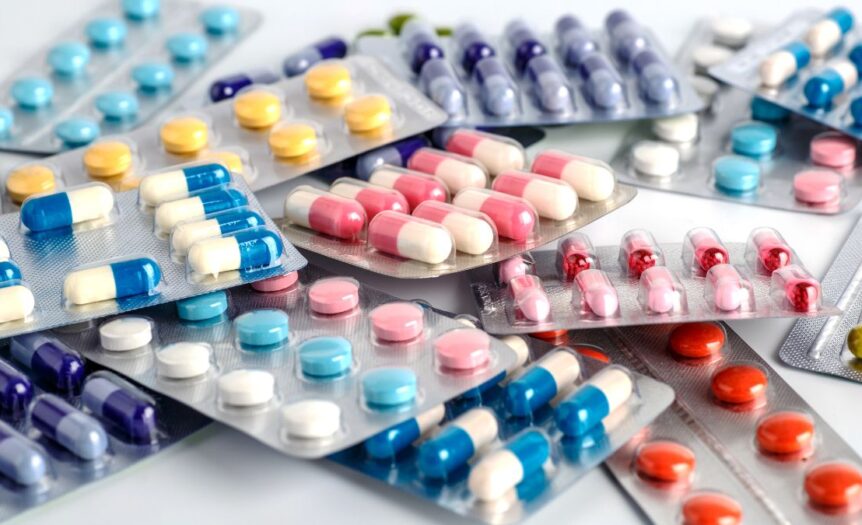The rise of online pharmacies has made buying pills and tablets much easier, but it’s also led to many fake online pharmacies and fraudulent medicines. Learn how to identify counterfeit medicines and what to do if you encounter them.
Identifying Counterfeit Pills and Tablets
Whenever purchasing pills or tablets, it’s wise to check their validity each time. This is especially true if you’re buying from a new pharmacy, have a new prescription, or are buying medicine abroad. You want to confirm that you’re getting the right, legitimate medicine.
There are a few ways to identify counterfeit medicines, but the best methods are to check the pharmacy and the pill/tablet’s imprint code.
Check Pharmacy Credentials
If you find you’ve gotten counterfeit medicine, it’s likely because the pharmacy itself is fraudulent and trying to scam patients out of money. If you’re buying from a brick-and-mortar pharmacy, you should be fine—the real concern is when buying medicine online.
Some patients have successfully saved money by buying from an online pharmacy, but the internet is rife with scammers, so there are some warning signs that patients should watch out for. If the pharmacy doesn’t require a doctor’s prescription, doesn’t have a licensed pharmacist on hand to answer questions, or offers a significantly lower price for the same medicine, those are red flags that the pharmacy could be fake.
Check the Imprint Code
Another way that patients can learn how to identify counterfeit medicines is by examining the imprint code. The pharmaceutical imprint code is a series of numbers, letters, and symbols printed on all US FDA-approved pills and tablets and recorded in an online FDA database.
The pharmaceutical imprint code is important because it allows anyone to look up their pills and tablets to confirm their legitimacy. Patients can search for the medicine they should be getting on the FDA’s database and compare it with the medicine they have or look up the imprint code on their medicine and confirm that it’s in the FDA’s data. If the imprint code on a pill/tablet doesn’t match the FDA’s database, that’s a clear sign of counterfeit drugs.
What To Do When You Find Counterfeit Pills and Tablets
If you find that the pills or tablets you’ve bought are fake, do not take them—they’re not FDA-approved and could be unsafe for consumption. Patients can call the drug manufacturer and inform them that they bought a counterfeit drug from a pharmacy—drug manufacturers keep records of all their batches, and they’ll be able to confirm that the drugs are fake.
Patients can also report their findings to the FDA via the FDA’s MedWatch program of the FDA’s Office of Criminal Investigations. If you find fraudulent medicines, you should report them immediately to prevent anyone else from being scammed and possibly harming themselves with unsafe drugs.










 Deering Estate
Deering Estate
 Massage Envy South Miami
Massage Envy South Miami
 Calla Blow Dry
Calla Blow Dry
 My Derma Clinic
My Derma Clinic
 Sushi Maki
Sushi Maki
 Sports Grill
Sports Grill
 The Healthy Kitchen
The Healthy Kitchen
 Golden Rule Seafood
Golden Rule Seafood
 Malanga Cuban Café
Malanga Cuban Café

 Kathleen Ballard
Kathleen Ballard
 Panter, Panter & Sampedro
Panter, Panter & Sampedro
 Vintage Liquors
Vintage Liquors
 The Dog from Ipanema
The Dog from Ipanema
 Rubinstein Family Chiropractic
Rubinstein Family Chiropractic
 Your Pet’s Best
Your Pet’s Best
 Indigo Republic
Indigo Republic




 ATR Luxury Homes
ATR Luxury Homes


 2112 Design Studio
2112 Design Studio
 Hamilton Fox & Company
Hamilton Fox & Company
 Creative Design Services
Creative Design Services
 Best Pest Professionals
Best Pest Professionals
 HD Tree Services
HD Tree Services
 Trinity Air Conditioning Company
Trinity Air Conditioning Company
 Cisca Construction & Development
Cisca Construction & Development
 Mosquito Joe
Mosquito Joe
 Cutler Bay Solar Solutions
Cutler Bay Solar Solutions


 Miami Royal Ballet & Dance
Miami Royal Ballet & Dance
 Christopher Columbus
Christopher Columbus
 Pineview Preschools
Pineview Preschools
 Westminster
Westminster
 Carrollton
Carrollton
 Lil’ Jungle
Lil’ Jungle
 Frost Science Museum
Frost Science Museum
 Palmer Trinity School
Palmer Trinity School
 South Florida Music
South Florida Music
 Pinecrest Orthodontics
Pinecrest Orthodontics
 Dr. Bob Pediatric Dentist
Dr. Bob Pediatric Dentist
 d.pediatrics
d.pediatrics
 South Miami Women’s Health
South Miami Women’s Health

 The Spot Barbershop
The Spot Barbershop
 My Derma Clinic
My Derma Clinic




 Miami Dance Project
Miami Dance Project

 Rubinstein Family Chiropractic
Rubinstein Family Chiropractic
 Indigo Republic
Indigo Republic

 Safes Universe
Safes Universe
 Vintage Liquors
Vintage Liquors
 Evenings Delight
Evenings Delight





 Atchana’s Homegrown Thai
Atchana’s Homegrown Thai
 Baptist Health South Florida
Baptist Health South Florida

 Laser Eye Center of Miami
Laser Eye Center of Miami
 Visiting Angels
Visiting Angels
 OpusCare of South Florida
OpusCare of South Florida

 Your Pet’s Best
Your Pet’s Best





 HD Tree Services
HD Tree Services
 Hamilton Fox & Company
Hamilton Fox & Company


 Creative Design Services
Creative Design Services